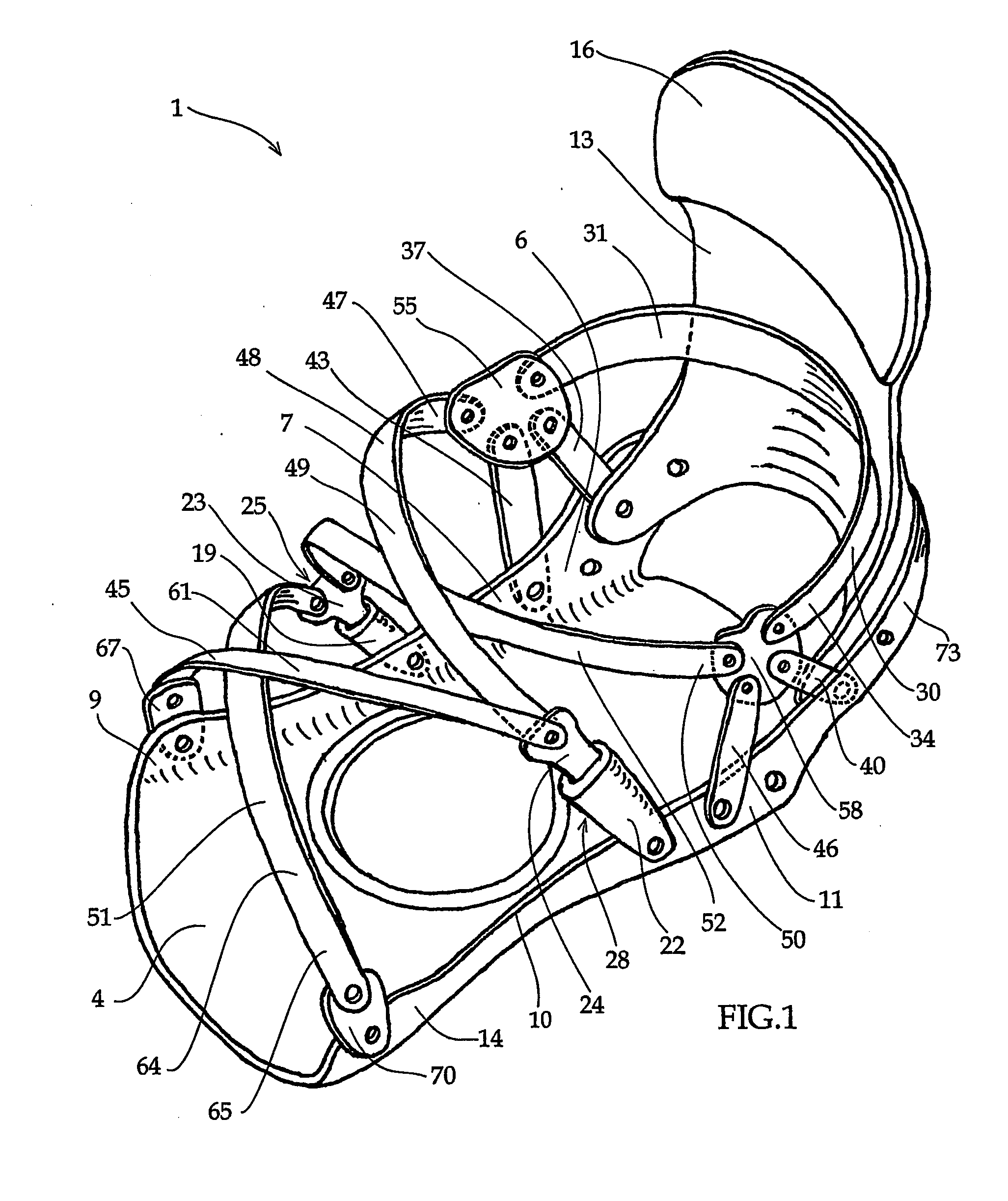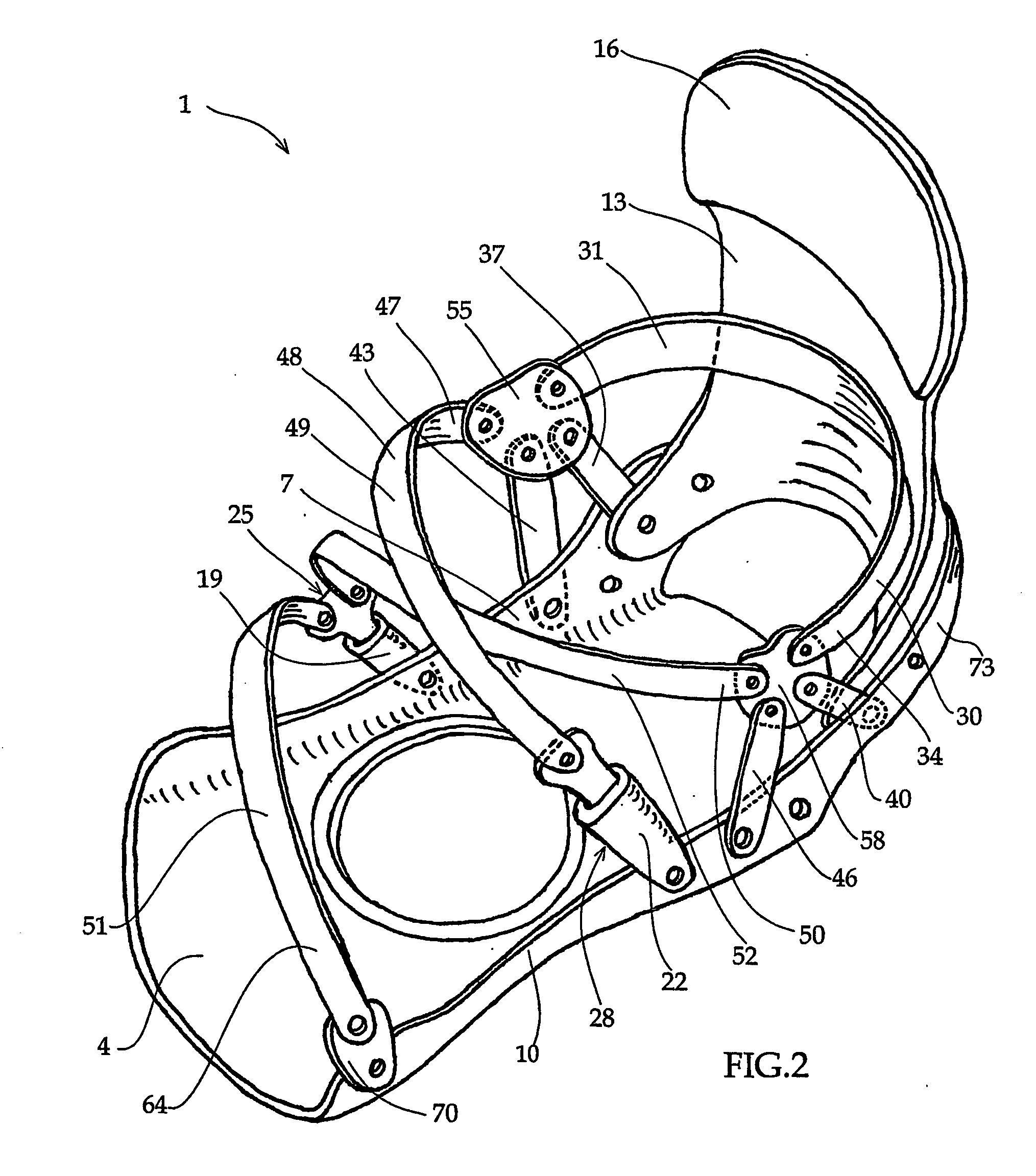Interface system for retaining a foot or a boot on a sports article
a technology for sports articles and sports shoes, applied in snowboard bindings, sports equipment, transportation and packaging, etc., can solve the problems of not being able to dynamically conform to the background art, not being able to secure the user's heel to the snowshoe, and never being able to offer the comfort and performance of strap bindings, etc., to achieve the effect of increasing comfort and performance, less tension, and more surface area
- Summary
- Abstract
- Description
- Claims
- Application Information
AI Technical Summary
Benefits of technology
Problems solved by technology
Method used
Image
Examples
Embodiment Construction
[0183] It is noted that only a right-footed embodiment is disclosed herein with the understanding that a similar device would be provided for the left foot, being anatomically symmetric to the right-footed device, or being a copy of the same device.
[0184] Referring to FIG. 1, a preferred embodiment of interface system 1 is presented. In this embodiment, interface system 1 preferably comprises rigid base structure 4, vertical support member 13, and three pliable linkage members: lateral linkage member 48, medial linkage member 51 and heel linkage member 30.
[0185] Base structure 4 preferably comprises (1) lateral edge 7 having lateral back portion 6 and lateral front portion 9, (2) medial edge 10 having medial back portion 11 and medial front portion 14, and (3) heel loop portion 73. Preferably, heel loop portion 73 is adjustably connected to rigid base structure 4 by conventional means, e.g., bolts or rivets. Alternatively, rigid base structure 4 and heel loop portion 73 are molded...
PUM
 Login to View More
Login to View More Abstract
Description
Claims
Application Information
 Login to View More
Login to View More - R&D
- Intellectual Property
- Life Sciences
- Materials
- Tech Scout
- Unparalleled Data Quality
- Higher Quality Content
- 60% Fewer Hallucinations
Browse by: Latest US Patents, China's latest patents, Technical Efficacy Thesaurus, Application Domain, Technology Topic, Popular Technical Reports.
© 2025 PatSnap. All rights reserved.Legal|Privacy policy|Modern Slavery Act Transparency Statement|Sitemap|About US| Contact US: help@patsnap.com



